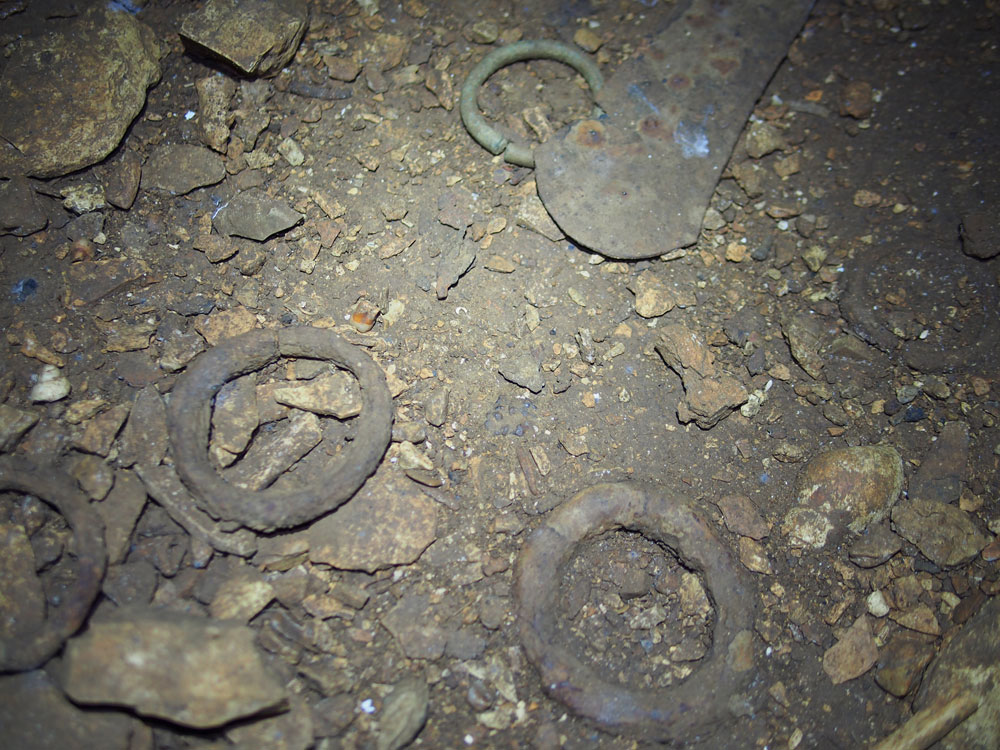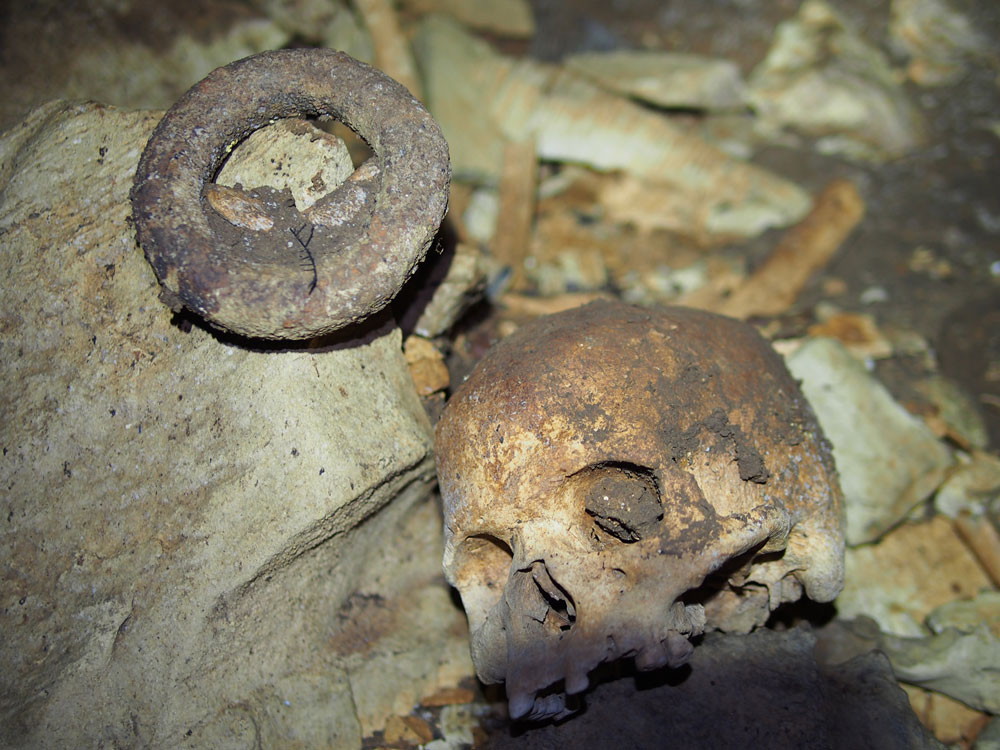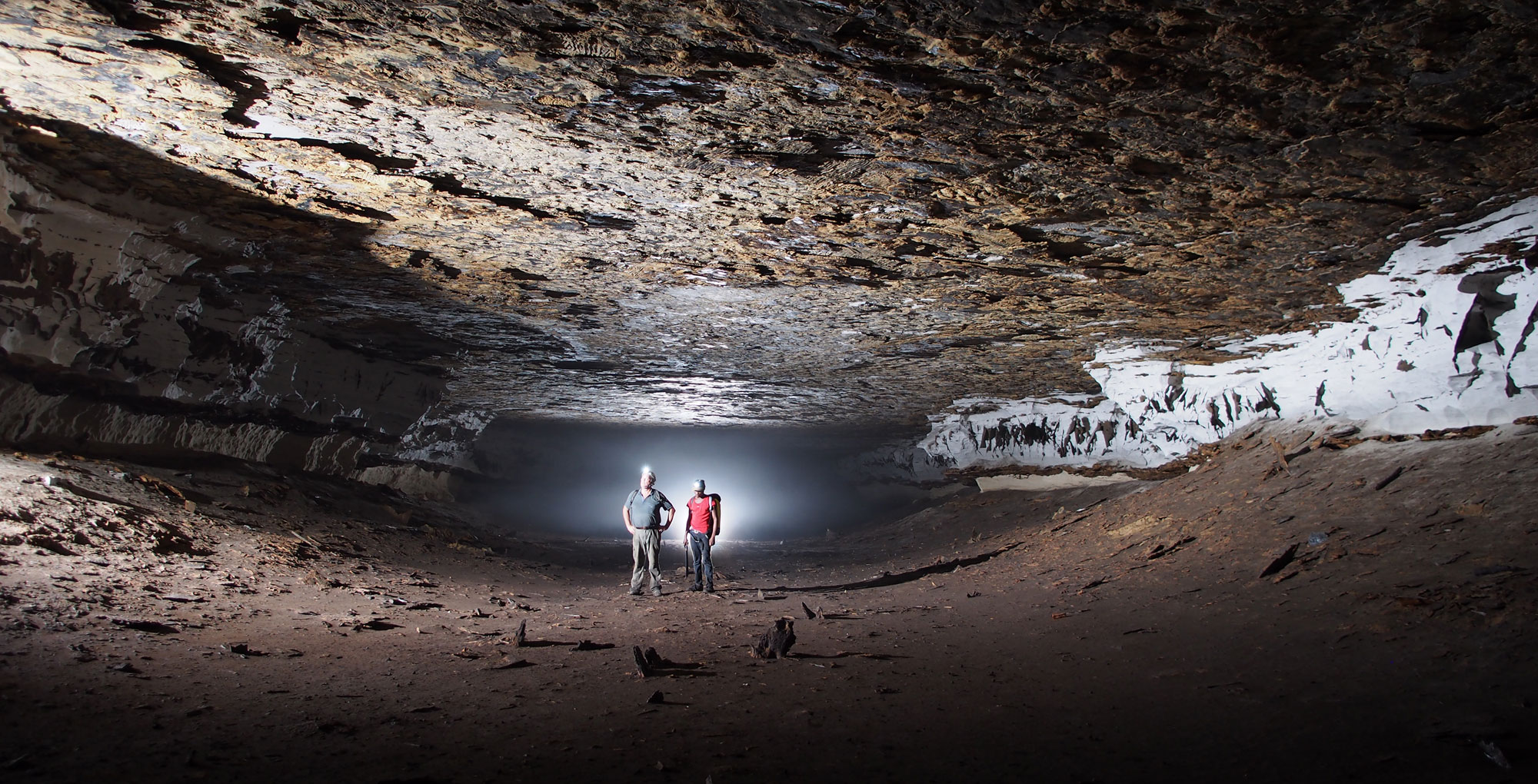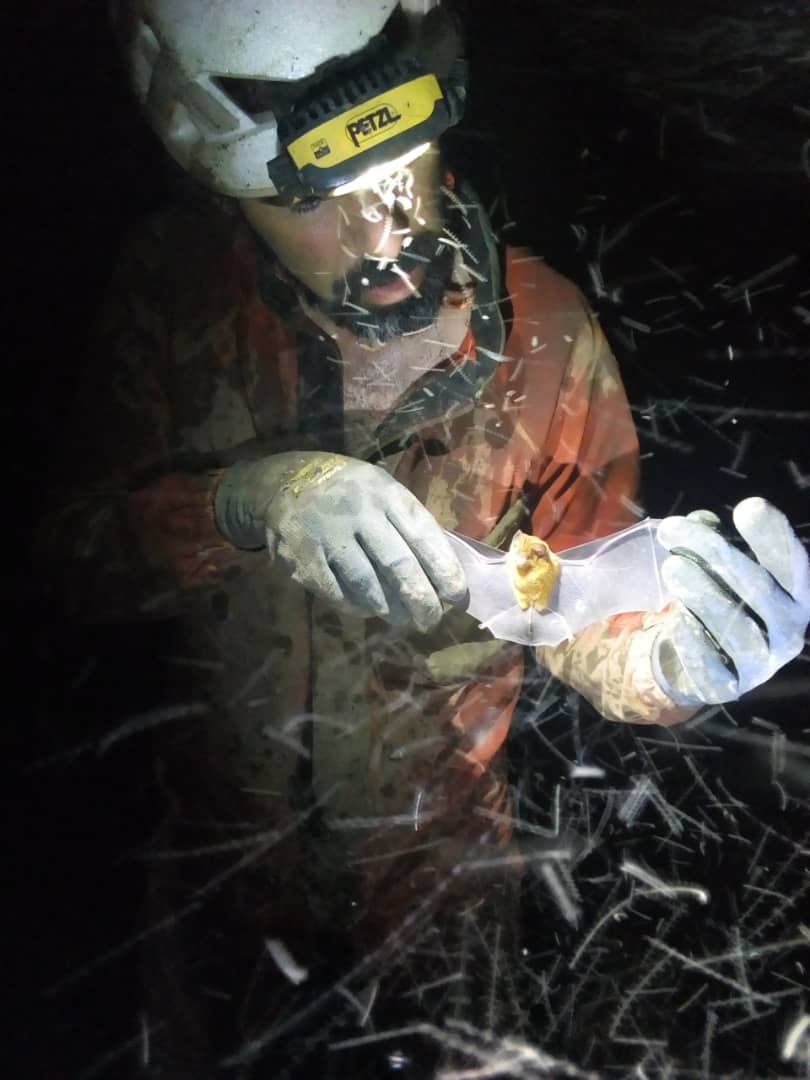Discovery of Iroungou cave, an exceptional burial site in Gabon
Communiqué
Grenoble, dec 19, 2018
(2020 update here)
(Full Report describing the caves of Mouila and the discovery of the cave of Iroungou available on ResearchGate)
An exceptional archaeological cave, Iroungou, was discovered in September 2018 in Gabon, in the region of Mouila, by a team of French and Gabonese researchers, announced the authorities on dec 18, 2018.
While on a mission for the National Parks, from 18 to 28 September 2018, to search for new caves and survey them, speleologist Olivier Testa (NOT Engineers) rappeled down a previously unexplored pit, and set foot in the middle of several hundreds human bones, and more than 180 tools, arms, and pieces of jewellery, in iron, copper and brass. There were rings, beads, pierced animal teeth and cowries.
In total, at least 30 human skeletons are present.
He explored the bottom of the shaft, took pictures of all the objects in-situ, and only a few objects were touched. Testa left the site as is for future research and nobody else descended since [1].
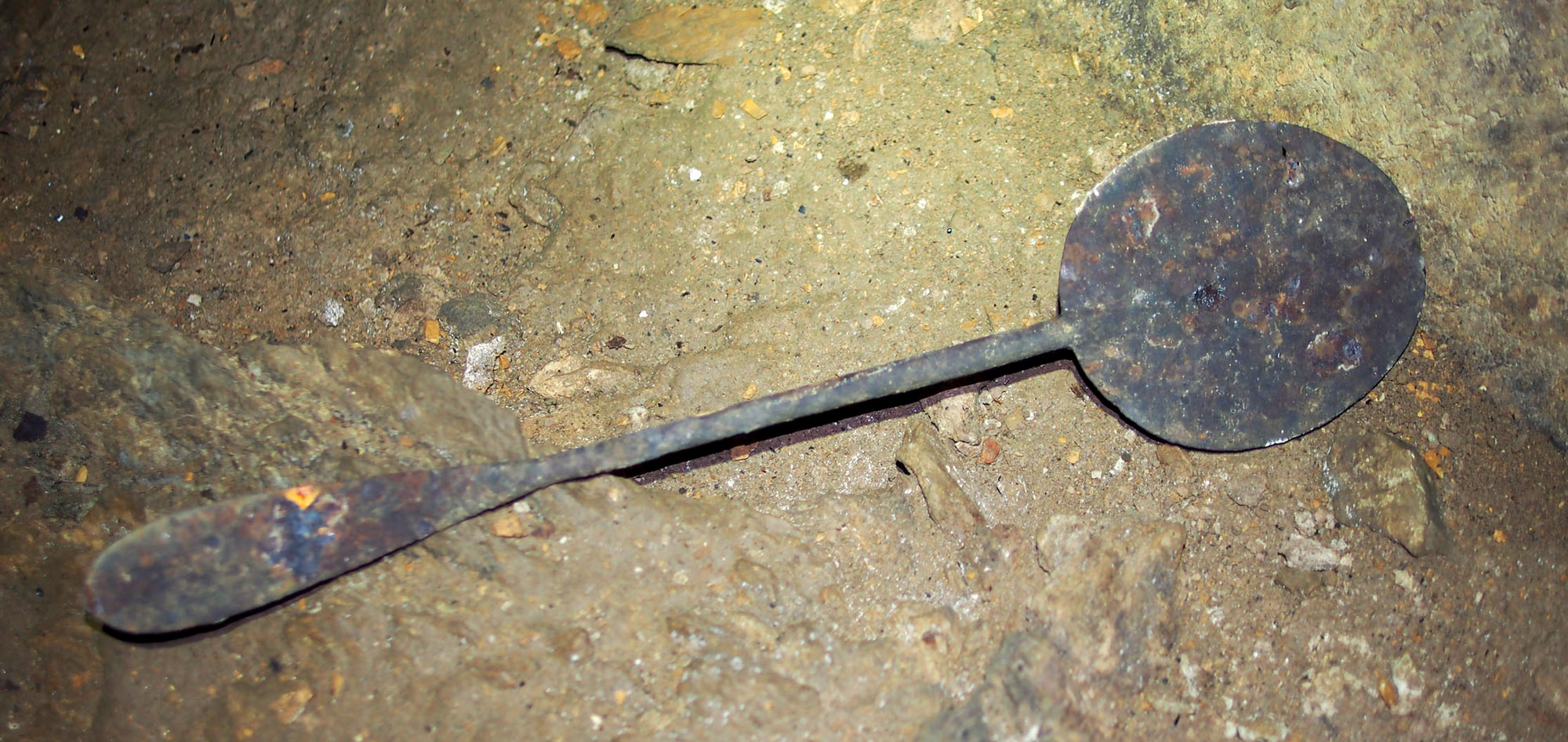
Olivier Testa was on a mission with geoarchaeologist Richard Oslisly (National Agency of National Parks of Gabon) who said "The sepulchral cave of Iroungou is a small wonder". Students were Julie Ikouanga (speleologist, geology PhD student) and Maël Ntsinga (archeaology Phd student).
It is the Minister of Culture, Alain-Claude Bilie-By-Nze who announced the discovery on December 18 at a press conference in Libreville. "We will now have to continue the process and we will partner, of course, with the teams who have already started the adventure. (...) We will accompany the project and the National Museum will be happy to display these objects."
Olivier Testa continues : "these bones would date back several hundred years. More precise dating will tell [2]. This is the first time such a burial site has been discovered in Central Africa, and this opens up an incredible field of research."

The next step will be the 3D laser scanning of the cave to position each object and bone, before careful excavations. This cave offer an incredible opportunity to better understand the dynamics of the population of Gabon.
“In the old times, the dead people were not buried, but abandonned in the forest (...). And it was common practice to drag the body at the top af a shaft or a waterfall, and dump it. We thought it prevented them from coming back” "Sorcerers body were thrown down caves to prevent anyone from touching them" wrote anthropologist Andersson and Perrois.
In the cave of Iroungou, many of the skull found have worn-down teeth (sign od older person), or removed teeth (of probable ritual origin). There are a lot of "prestige" objects or currencies.
During the speleological mission, 8 other caves with several hundred meter long galleries hitherto unknown were discovered and surveyed by Testa and his assistant Ikouanga. The total length of surveyed galleries is 3.8km. Hundreds of thousands of bats occupy them, as well as porcupines, pythons and insects by the millions. "It is one of the discovery I’’ve been dreaming of for a long time," added the speleologist.
The mission was partly funded by Olam Palm Gabon’’s Conservation and Sustainable Development Program, which operates the concession where the caves open, and ANPN.
Contact:
olivier.testa@not-engineers.fr
+33 6 04 46 45 10
Pictures in this page are free to use with mention of the author and a functional link to this webpage in the article.
2020 Update
February 2020: After additional archeological field research by Oslisly in 2019, 500 metal objects were inventoried, with 39 pierced teeth (panther, hyena) and 21 seashells. Many sample were collected.
March 2020
An article by AFP-Le Monde was published on march 10, reporting the discovery of the cave.
From a scientific standpoint:
Datings on femurs reveal the skeletons dates back to the 14th century, which is much older than expected.
The Team
The team Oslisly / Testa had already discovered the cave-dwelling orange crocodiles of Abanda, and explored the caves of Lastoursville where they discovered, among many caves, the first cave drawing with ocher and the first first rock engravings in caves of the country (2013).
This is their sixth and last mission together.
Olivier Testa is a speleologist. In Gabon, after 9 expeditions, beyond Lastoursville and the crocodiles of Abanda (see above), he discovered the first charcoal cave drawings (Nyanga caves, 2007) and surveyed more than 30 caves.
In Haiti, he discovered more than 200 caves among which several archaeological caves with human remains and objects, pre-Columbian cave art, as well as caves with touristic potential.
In Saudia Arabia, he discovered a whole system of very old tunnels under the city of Dumat al-Jandal..
In Madagascar, explores with the DRSS the longest flooded cave of Africa, Anjanamba, among many, since 2019.
https://www.olivier-testa.com
Richard Oslisly is a geoarchaeologist, specialised in paleoenvironmental studies, and works for the ANPN on archaeological research on the first populations of Gabon. His favourite areas of work are Wonga-Wongue National Park, Lopé National Park and Lastoursville.
He has worked in Cameroon.
Julie Ikouanga is a gabonese speleologist, just finishing her MSc in geology and starting a PhD in 2019.
She was Olivier Testa’s assistant for cave exploration and cave surveying. They had already worked together in Lastoursville.
Maël Ntsinga is a PhD student in archeology in Gabon, working with Richard Oslisly on surface prospections and collecting artefacts




